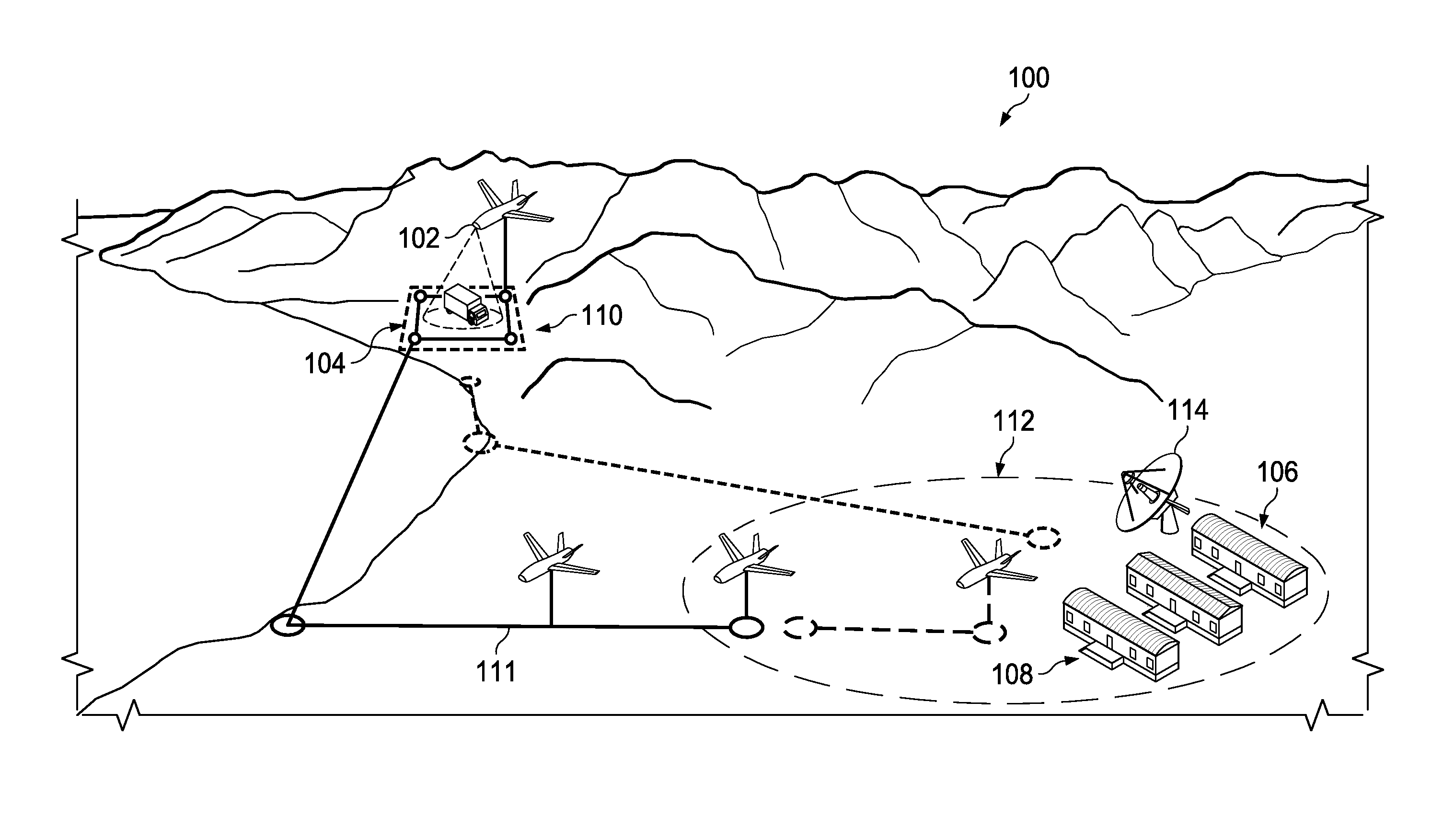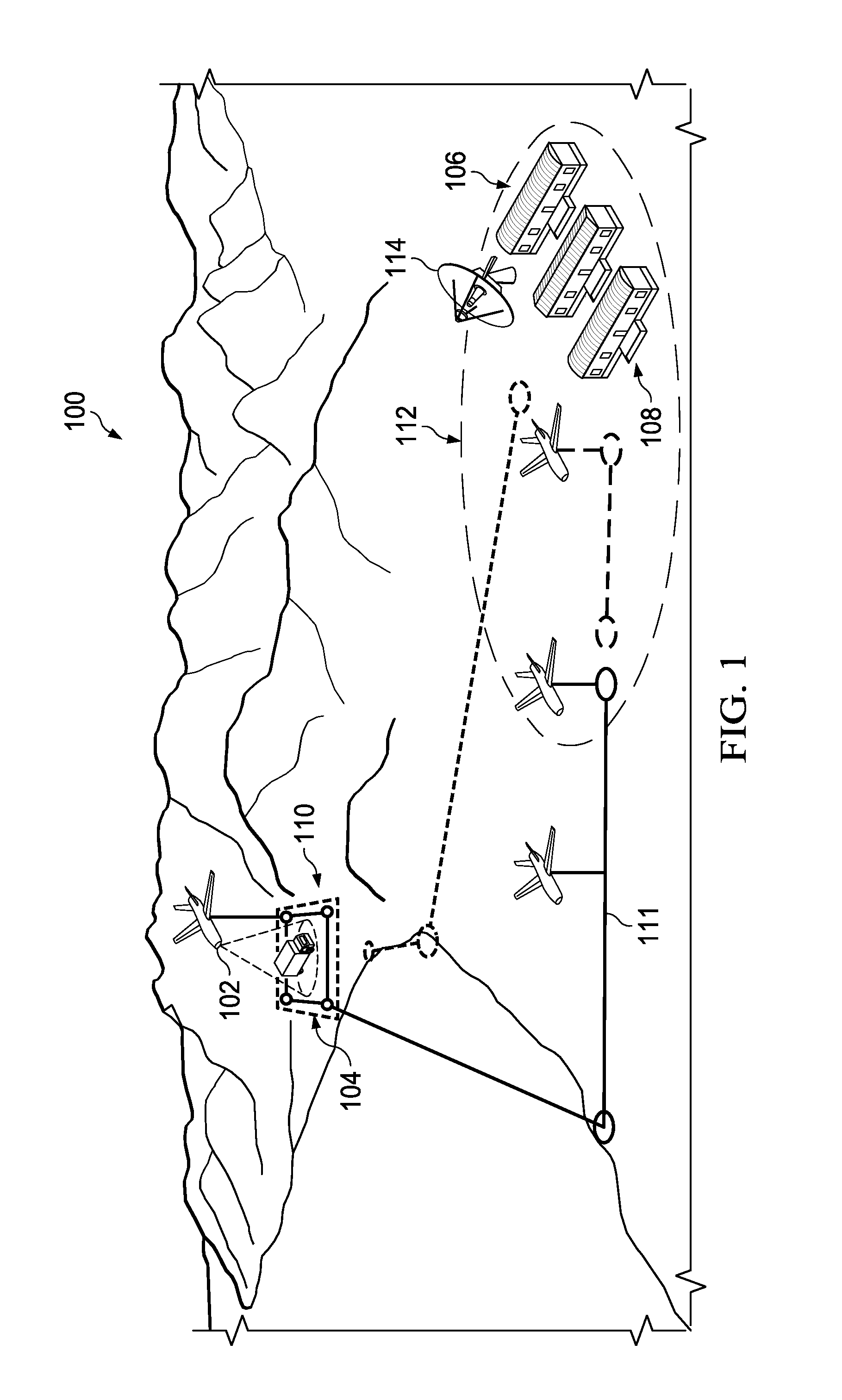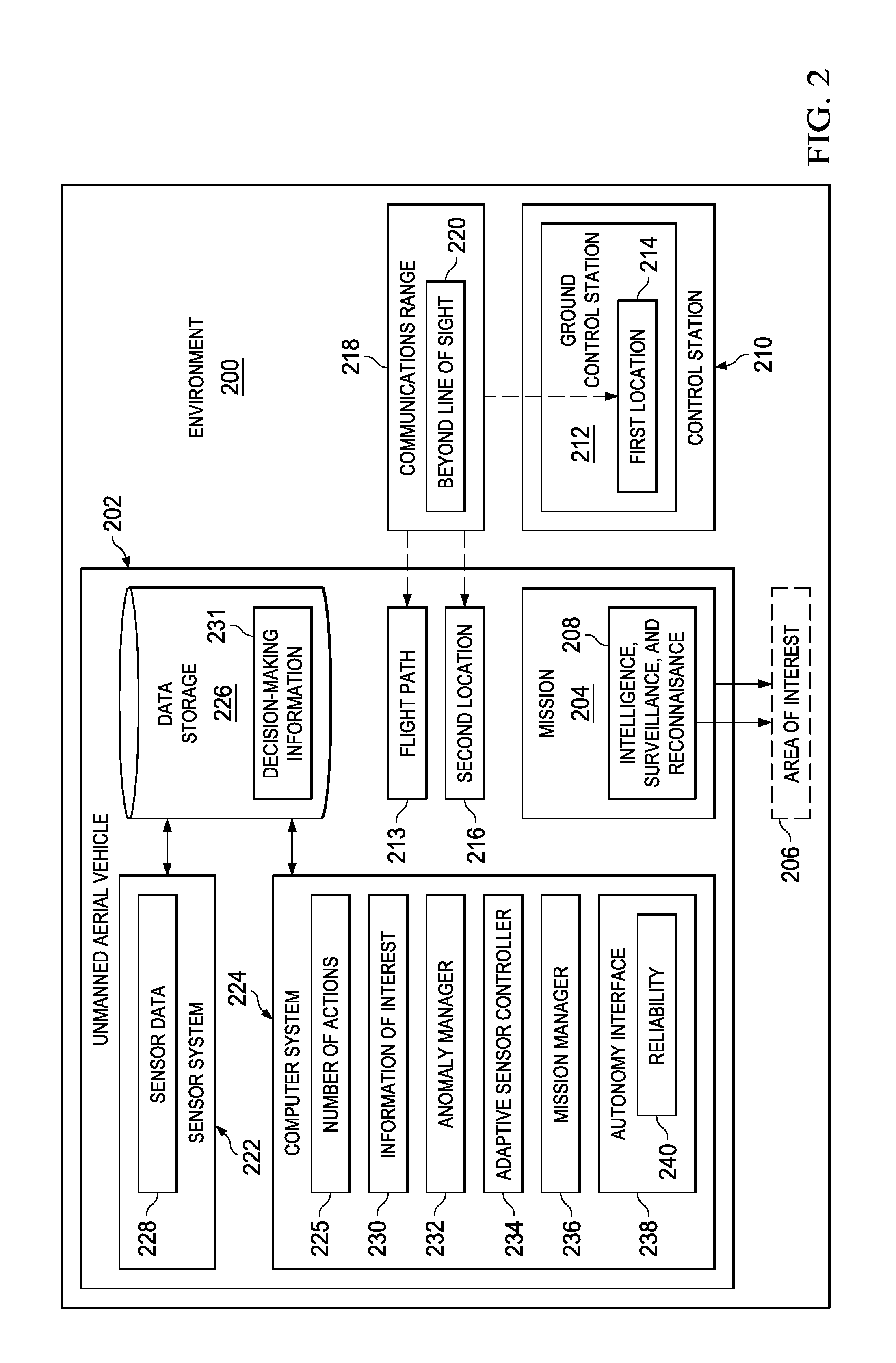Autonomous Unmanned Aerial Vehicle Decision-Making
- Summary
- Abstract
- Description
- Claims
- Application Information
AI Technical Summary
Benefits of technology
Problems solved by technology
Method used
Image
Examples
Embodiment Construction
[0024]The illustrative embodiments recognize and take into account different considerations. For example, the illustrative embodiments recognize and take into account that it may be desirable to have a method for autonomously operating an unmanned aerial vehicle such that decision-making that is traditionally performed by one or more persons at a control station located remotely from the unmanned aerial vehicle may be moved onboard the unmanned aerial vehicle. In particular, the illustrative embodiments recognize and take into account that it may be desirable to autonomously perform interpretation of imaging data and decision-making onboard an unmanned aerial vehicle when the unmanned aerial vehicle is outside a communications range with the control station.
[0025]This type of autonomous operation of the unmanned aerial vehicle may improve reaction times and mission performance. Further, by moving these operations onboard the unmanned aerial vehicle, the burden placed on personnel at...
PUM
 Login to View More
Login to View More Abstract
Description
Claims
Application Information
 Login to View More
Login to View More - R&D
- Intellectual Property
- Life Sciences
- Materials
- Tech Scout
- Unparalleled Data Quality
- Higher Quality Content
- 60% Fewer Hallucinations
Browse by: Latest US Patents, China's latest patents, Technical Efficacy Thesaurus, Application Domain, Technology Topic, Popular Technical Reports.
© 2025 PatSnap. All rights reserved.Legal|Privacy policy|Modern Slavery Act Transparency Statement|Sitemap|About US| Contact US: help@patsnap.com



